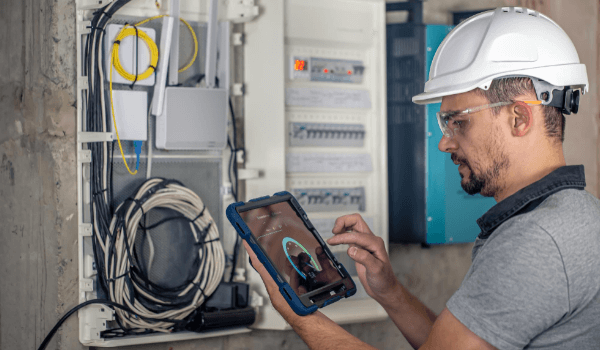Energy and Process Optimization
Implementing an energy monitoring solution is a pivotal step in managing and reducing energy consumption within an organization. This solution involves the deployment of advanced monitoring technologies to track energy usage patterns in real-time. It allows organizations to gain visibility into their energy consumption, identify inefficiencies, and pinpoint areas where energy conservation measures can be applied.
Energy optimization is a holistic approach to enhancing energy efficiency and minimizing waste in various processes, systems, and facilities. It involves the systematic analysis of energy consumption patterns, the identification of inefficiencies, and the implementation of strategies to reduce energy use while maintaining or improving operational performance.
Process optimization is a strategic approach to improving the efficiency and effectiveness of various organizational processes. It involves a thorough analysis of existing processes, identification of bottlenecks or inefficiencies, and the implementation of enhancements to streamline operations and achieve better outcomes.
Energy optimization is a holistic approach to enhancing energy efficiency and minimizing waste in various processes, systems, and facilities. It involves the systematic analysis of energy consumption patterns, the identification of inefficiencies, and the implementation of strategies to reduce energy use while maintaining or improving operational performance.
Process optimization is a strategic approach to improving the efficiency and effectiveness of various organizational processes. It involves a thorough analysis of existing processes, identification of bottlenecks or inefficiencies, and the implementation of enhancements to streamline operations and achieve better outcomes.
Energy and Process Optimization
Energy Monitoring Solution
Implementing an energy monitoring solution is a pivotal step in managing and reducing energy consumption within an organization. This solution involves the deployment of advanced monitoring technologies to track energy usage patterns in real-time. It allows organizations to gain visibility into their energy consumption, identify inefficiencies, and pinpoint areas where energy conservation measures can be applied.
By investing in energy monitoring solutions, organizations can make data-driven decisions to optimize energy use, reduce costs, and minimize their carbon footprint. These solutions provide insights that enable proactive energy management, helping organizations meet sustainability goals, enhance energy efficiency, and ultimately contribute to a greener future.

Energy optimization is a holistic approach to enhancing energy efficiency and minimizing waste in various processes, systems, and facilities. It involves the systematic analysis of energy consumption patterns, the identification of inefficiencies, and the implementation of strategies to reduce energy use while maintaining or improving operational performance.
By embracing energy optimization, organizations can significantly lower energy costs, reduce greenhouse gas emissions, and enhance overall sustainability. It encompasses a wide range of initiatives, from equipment upgrades to process redesign, all aimed at achieving the dual benefits of cost savings and environmental responsibility. Energy optimization is a proactive measure that aligns with an organization’s commitment to sustainable practices.
Energy Optimization
Process Optimization
Process optimization is a strategic approach to improving the efficiency and effectiveness of various organizational processes. It involves a thorough analysis of existing processes, identification of bottlenecks or inefficiencies, and the implementation of enhancements to streamline operations and achieve better outcomes.
In the context of sustainability, process optimization plays a crucial role in minimizing resource consumption, waste generation, and environmental impact. By optimizing processes, organizations can reduce energy and material inputs, lower production costs, and enhance overall sustainability performance. It’s a proactive step towards aligning operations with sustainability goals, fostering innovation, and maintaining a competitive edge in an environmentally conscious market.


